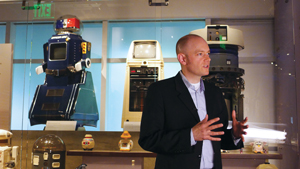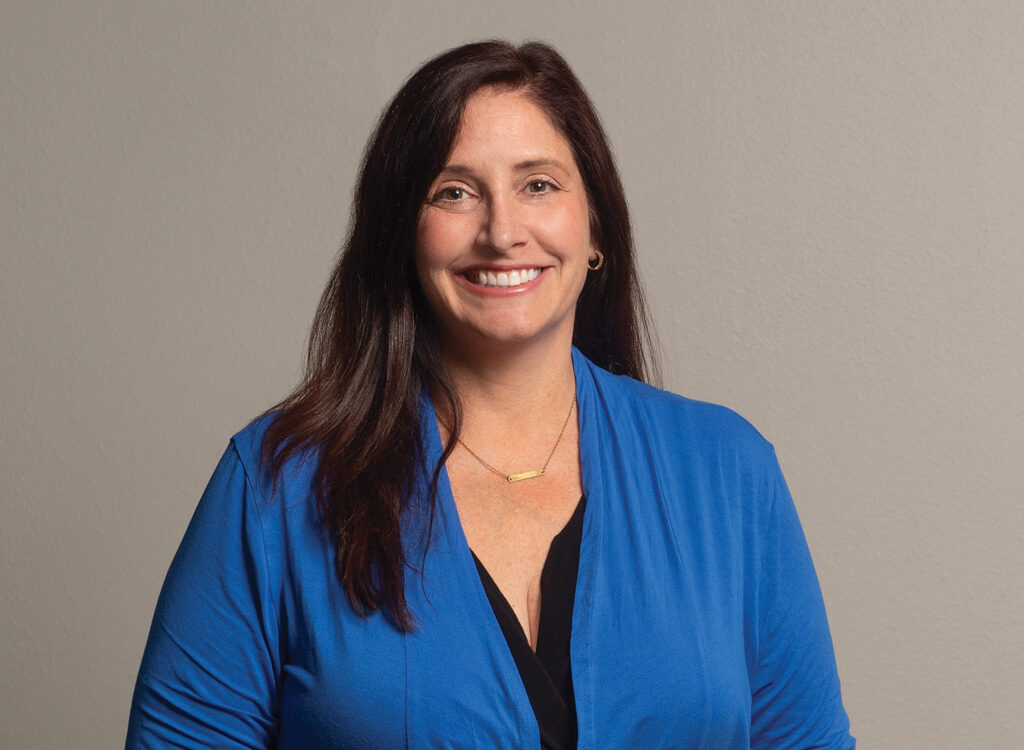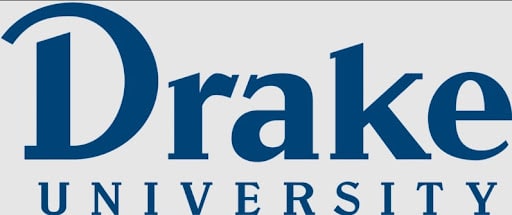The Future…Facebook. Uber. Airbnb. They changed the world.
Now new disruptive technologies are coming. How can Des Moines prepare for the unknown? Futurists weigh in...

PERRY BEEMAN Jun 3, 2016 | 11:00 am
11 min read time
2,531 wordsBusiness Record Insider, Innovation and EntrepreneurshipDes Moines leaders have heard from a range of local speakers lately with big ideas for the future.There’s been talk about a major university campus downtown. About changing street designs to make them friendlier to bicyclists, and in some cases to make them two-way instead of one. We’ve heard about walkability, and the Internet of Things and setting regulations that encourage rather than stifle new approaches.
A big question woven into the discussion is this: How do local communities prepare for technologies they didn’t see coming, like Uber, home solar systems, driverless cars and the like? How do we approach an era in which the type of change that brought TVs into homes in the ’50s, and then turned the screen to color, now is happening at speeds that are orders of magnitude faster?
We interviewed a cross-section of visiting authorities and a local expert on the topic. What follows are some of their most compelling thoughts.
Brian David Johnson | technology futurist, Frost & Sullivan, Mountain View, Calif.
What makes him an expert
Johnson often works with communities and companies to “futurecast,” encouraging them to plan around their core goals. He is futurist in residence at Arizona State University’s Center for Science and the Imagination The author of regular columns for IEEE Computer Magazine and Successful Farming magazines, he served for a decade as Intel Corp.’s first futurist.
Brian David Johnson is used to working with organizations that have to make decisions knowing the payoff won’t be until five to 15 years later.
For him, the future will be changed significantly by more powerful and smaller computers.
“The size of computational power is going to get smaller. As of 2020, it will be about five atoms across, which means we will be able to turn anything into a computer. We will be able to put intelligence into anything. We will be able to put it into your shoe, this table, the wall, street signs, you name it. The question won’t be ‘Can we do it?,’ as it was for decades. It will be ‘Can we make it work?’
“You can know that you will have more computational power. You will have more data. You will have more artificial intelligence. You will have the ability in the next five or 10 years to have more cognitive tools, meaning tools that can begin to think and make predictions for you.
“This is simply very smart devices that can come up with solutions so your communities can serve people better.”
Then the decision becomes “Is the move worth the money?” Johnson added.
“Now the question for businesses and communities becomes, ‘Why?’ Why would you do it? From an expense standpoint, but also, how will you make people’s lives better, safer, more sustainable, more productive, happier? For me, that is the bar we should use and many communities do use, because we have scarce funds.
“For example, you could use a device on your phone to reroute people to avoid an accident, like an Uber system.
“Our communities become massive computers that we live inside of. What’s great about that is you can optimize them for safety, or efficiency. We can think about them in a way that is much more efficient.”
Autonomous cars are an example of a change that is coming quickly.
“The driver is mostly in charge now. Over the next few years, you are going to have the driver still in charge but the car helping out with brakes, or lane drift, or parking. The real important thing isn’t the driver; it’s the passenger in the back seat. Meaning that generation in their car seats now but who will be drivers in the next 10 to 15 years will never have known a time when the car wasn’t actively trying to protect them. For them, the idea of an autonomous car makes perfect sense. Why not?”
James Collins | Senior vice president, DuPont
What makes him an expert
Collins has regularly encouraged employees to suggest changes at DuPont, and now has been chosen to serve as chief operating officer of Dow DuPont’s planned agricultural company, which will include the DuPont Pioneer operations in Johnston.
Companies and communities preparing for advancements need to look in new places and to involve the whole staff, said James Collins, senior vice president of DuPont.
“You have to look in nontraditional places,” he said an interview. “We have biotech developments that didn’t come from the biotech area.
“If we are looking to where the future is headed and we are looking at all the normal places, those are going to give you a little more of the same,” Collins said. “But if we are looking at the edges, we have a better sense of the technologies coming that really leap us forward and move us in a new direction.”
Part of the challenge is to set up a culture.
“Things like open innovation systems where we’re allowing crowdsourcing and broad scale opportunities for ideas to flow” are important, Collins said. “I know universities are experimenting with that, and some of our labs. The ideas and the next wave sometimes come from the strangest places. For a government or a business to have eyes wide open — a wider aperture — for thoughts and ideas is probably some good advice.”
Business and governments often can be so focused they miss opportunities, Collins said. “How do you tap into the thousands and thousands of brains and ideas that are out there? You usually are narrowly focused. And you usually are narrowly focused on folks that only know the current way of doing things.”
The speed of change and the rise of technology hit home for Collins. “One of my sons is studying electronics and electrical engineering. So he spent four years learning about electronics. Right at the end of the four years, his professor told him that 90 percent of what he learned is already obsolete. It’s that rate of change, and how do you stay out ahead of that?”
Then there’s the issue with working in a proprietary environment, which itself can lead to looking inward as a way to protect intellectual property. How do we all get around that while encouraging innovation?
“First of all, making sure our employees, our teams, are connected,” Collins said. “The other thing is that we create a business environment that makes it easy for others to collaborate with us. People bring us ideas. No disrespect to lawyers — we love our attorneys — but it takes 12 of them to do a nondisclosure agreement. That stifles the ability to collaborate or cooperate. But if you are a company that has a reputation of being open to that kind of collaboration, we love those types of partnerships. We even coined a term. We call it the Collaboratory. We don’t have all the answers. We want others. We want to collaborate with you.”
Collins has watched the pace of change pick up dramatically in his time at DuPont. “I’ve been with DuPont for 30 years, and I’ve been in agriculture for 25,” he said. “The last five years I stepped away to do some other things. I am just now getting back to speed. The amount of change just in the last five years is staggering.”
He concluded: “In the last five years, we’ve doubled the genetic diversity in our portfolio that took us the previous 60 to create.”
Some other key thoughts
Need answers? Ask a 13-year-old.
“How can leaders prepare for the future? Easy. They need to get themselves a 13-year-old mentor. Period. Thirteen-year-old mentors are great because they are just young enough to have one foot in childhood and they are just old enough to know about the world and to not really care about your opinion. They will tell you how it really is. That gives a really fresh perspective.”
What are you optimizing for?
“The question we all need to ask ourselves is: What are you optimizing for?
Often, people don’t know. Generally, you can only pick two things. Then you say, ‘This is really what we are trying to get done, and what are the very specific steps — what are the ruthless steps — we need to take to get us there?”
Is there something that government and corporate leaders need to do to prepare for these technological advances?
“I do futurecasting, which is looking 10 to 15 years out, and I use some social science technical research of economic data, of trends, of cultural history. Bringing in experts. Most corporate boards don’t give themselves the time, the space, or the permission to have that conversation. If we look out 15 years, what is the future we want, and what is the future we want to avoid? It’s a simple conversation. It can take an hour, or maybe two hours. Looking at 10 years is outside of all political cycles, it’s outside of all economic predictions. It’s basically over the horizon. It gives you a kind of range. So when new people come aboard, we can say, ‘This is our shared vision.’ It can be incredibly clarifying, and it’s not that hard to do.”
Is that different than strategic planning?
“Strategic planning is usually the connective tissue between what I am talking about and where we are today. The strategic planning is the next step.”
Deborah Mielewski | Senior technical leader, Ford Motor Co.
What makes her an expert
Mielewski is paid to plan for the future. Her section at Ford regularly works to find new materials to make vehicles lighter and more durable. That has included work to make plastics out of materials you might not immediately think of, such as algae.
Companies and communities need to be open to ideas “that you never thought were imaginable,” said Deborah Mielewski, senior technical leader for Ford Motor Co.
“When I first started on replacing plastics, I thought they were so highly engineered that it was pretty much impossible. I was in the lab in the luxury position of just being able to mess around, and in reality don’t believe what you hear. It’s doable. It’s certainly doable to replace some of the fiber, some of the resins, and it doesn’t take forever.”
Now she studies making even lighter and safer plastics out of things like algae oil.
Having the likes of Executive Chairman William Clay Ford Jr. in the organization, with a strong environmental ethic, has helped, Mielewski said. “We talk about doing the right thing all the time. That is part of the success for us.”
What if you run into challenges like falling oil prices, which make finding alternatives to oil-based materials less pressing to some?
“If you just worry about oil prices, then you are missing the boat, because some of the materials are actually better. (Some alternative materials absorb more energy in a crash, for example.) No one would have known that but for our persistence.”
In 2000, Ford started the research section for alternative materials.
“The biomaterials research group doesn’t have the pressure of a timeline to put something into production. We are to come up with all the specifications, and then put it in if it makes sense.
I talk to the programs on a regular basis and we make a list with corporate now about what’s up next, and second, and third. What should be our focus? What are the roadblocks? How do we remove them?”
Some other key thoughts
How do you prepare for the unknown?
“I think you have to look at a lot of alternatives. There are probably 40 or 50 materials that we are continuing to monitor. Sometimes I feel like we are chickens running around with our heads chopped off, but I think it is necessary.”
In many cases, university researchers are key to the innovations, she said.
“Universities are critical. We would not get anything done in all those materials without the help of universities. They are taking the lead on some of chemical synthesis and making polymers. And when they make the polymer, we take it in-house, we extrude it with a natural fiber, injection-mold it and do the safety testing. The partnerships are really efficient, and everyone has the same goal in mind.
“We have formal university research partnerships. Those occur on an annual basis. The proposals that come in from professors are evaluated, ranked and funded. There are ways that individual groups can fund, directly out of their budgets work that they think needs to get done. Iowa State (University) is a partner. We support the Center for Bioplastics and Biocomposites.”
Mielewski’s top tips for businesses and communities that want to innovate
- Be persistent.
- Use other people.
- Use other companies with similar goals. “There are just so many ways to get there. Working by yourself in a lab with no support is not going to work.”
- “Invest in people to innovate. Let them be creative. Let them not be constrained by producing something in a certain time. It has to be something that the company values.”
- Make sure executives support the idea.
- Revisit the technology. “We often discover ways to reduce costs. And sometimes you need an alternate material.”
Steven Zumbach | Attorney, co-founder, Cultivation Corridor
What makes him an expert
Zumbach has focused on economic development in his community work, which has included forward-thinking efforts such as Cultivation Corridor. A longtime Des Moines attorney, he previously served on the state Board of Regents and on a range of business organizations. He served as one of the leaders for the original Capital Crossroads visioning process for Central Iowa.
The trick in innovation is to have your sights on what could be achieved, but also focus on getting the daily demands covered,” said Zumbach.
“At least be aware of what is possible,” Zumbach suggested. “These things tend not to happen too quickly. My sense is that if you are too futuristic, you don’t tend to get the things done that need to be done now.
“The difficulty is most of us are not comfortable with change. You want leaders who are comfortable with change, and not locked into current concepts and ideas. Complacency leads to mediocrity.
“Your feet better be planted in the present and the future. You can have dreams, and dreamers are fun to listen to, but there has to be an element of pragmatism and managing the risk.
“What is the probability that what you are discussing is going to happen, and in what time frame? It’s all statistics. If that is a bet I am going to place, then how do I cover that bet?”
In Greater Des Moines, major developments have resulted from patience and persistence, Zumbach said.
“There’s a patience in this community to do what we are talking about. We are dreamers,” as evidenced by Des Moines Performing Arts, the Western Gateway, and the East Village, he said. “But at the same time, we are very practical. And there is a certain tenacity and persistence.
“How many cities talk about stuff like the Western Gateway, and it never happens?”
The trick, Zumbach said, is to balance the here and now with the still to be dreamed.










